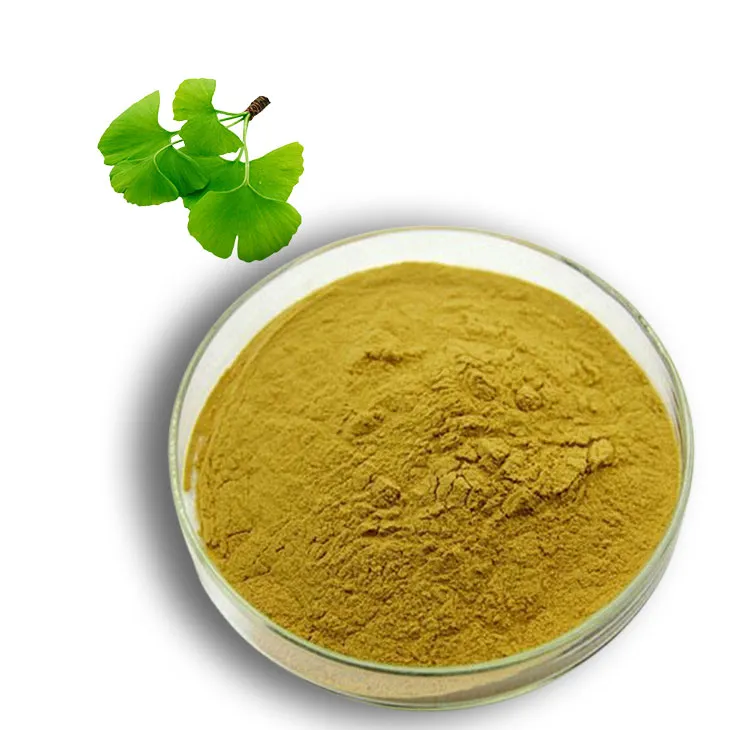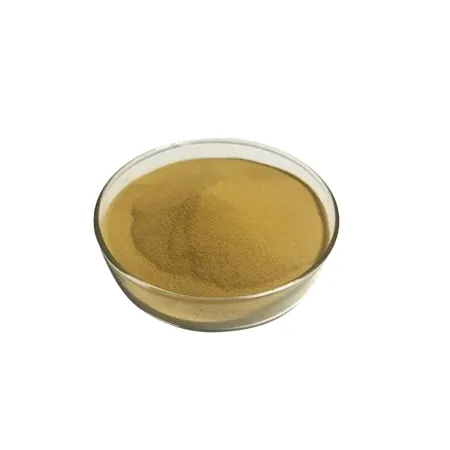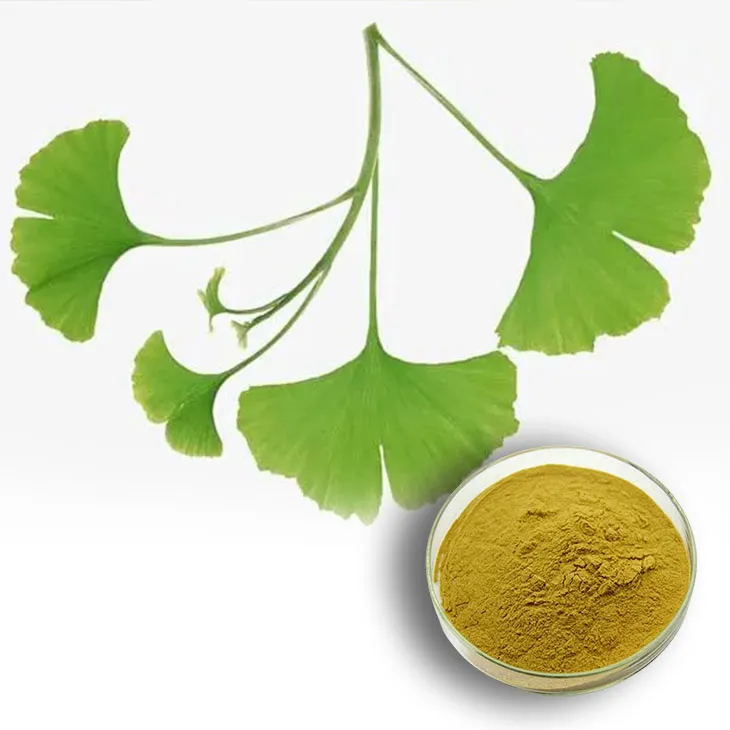- 0086-571-85302990
- sales@greenskybio.com
Optimal Bioavailability of Ginkgo Biloba Extract.
2024-11-26

1. Introduction
Ginkgo biloba is one of the most well - known and widely studied herbal supplements. Extracts from the ginkgo biloba tree have been used for centuries in traditional medicine for various purposes, such as improving cognitive function, enhancing blood circulation, and providing antioxidant effects. However, the full potential of ginkgo biloba extract (GBE) can only be realized when its bioavailability is optimized. Bioavailability refers to the proportion of a drug or supplement that enters the systemic circulation and is available at the site of action. In the case of GBE, understanding and enhancing its bioavailability is crucial for maximizing its therapeutic benefits.

2. Extraction Methods and Bioavailability
2.1. Traditional Extraction
Traditional extraction methods of GBE, such as solvent extraction, play a significant role in determining its bioavailability. Solvent - based extractions often use ethanol or other organic solvents. The choice of solvent can impact the chemical composition of the extract. For example, if the solvent is not carefully selected, it may lead to the extraction of unwanted compounds or the degradation of active ingredients. Ethanol - based extractions are common because they can effectively extract flavonoids and terpenoids, which are two major groups of bioactive compounds in GBE. However, the extraction process needs to be precisely controlled to ensure that these compounds are not damaged during extraction, as any alteration in their structure can affect their absorption in the body.
2.2. Modern Extraction Techniques
Modern extraction techniques offer new opportunities to improve the bioavailability of GBE. Supercritical fluid extraction (SFE) is one such method. Using carbon dioxide as a supercritical fluid, SFE can extract GBE with high selectivity and efficiency. This method has several advantages over traditional solvent extraction. Firstly, it can operate at relatively low temperatures, which helps to preserve the thermally labile compounds in GBE. Secondly, since carbon dioxide is a non - toxic and easily removable gas, the final extract is relatively pure and free from solvent residues. The purity of the extract obtained by SFE can enhance its bioavailability as there are fewer interfering substances. Another modern technique is microwave - assisted extraction (MAE). MAE can accelerate the extraction process by using microwave energy. This not only reduces the extraction time but also can potentially increase the yield of active compounds. Shorter extraction times can help to maintain the integrity of the bioactive compounds, which is beneficial for their subsequent absorption in the body.

3. Formulations and Bioavailability
3.1. Oral Formulations
Most GBE products are taken orally, and the formulation of these oral products can significantly affect bioavailability. Capsules are a common form of GBE oral formulation. The quality of the capsule shell can influence the release of the extract in the gastrointestinal tract. For example, a capsule shell that is too thick may delay the release of the extract, while a shell that is too thin may lead to premature release. Additionally, the formulation inside the capsule, such as the presence of excipients, can also play a role. Excipients should be chosen carefully to ensure that they do not interfere with the absorption of GBE. Tablets are another popular oral formulation. Tablet formulations may include disintegrants to help break down the tablet in the stomach or intestine. The choice of disintegrant and its effectiveness can impact how quickly the GBE is released and available for absorption.
3.2. Liquid Formulations
Liquid formulations of GBE, such as tinctures or syrups, can have different bioavailability characteristics compared to solid forms. Tinctures are alcohol - based liquid extracts. The alcohol in tinctures can act as a solvent and may enhance the solubility of some of the GBE compounds, potentially increasing their absorption. However, the high alcohol content may also cause irritation in some individuals. Syrups are often more palatable and may contain other ingredients such as sweeteners and preservatives. These additional ingredients need to be considered in terms of their potential impact on the bioavailability of GBE. For example, some preservatives may interact with the GBE compounds and reduce their absorption.

4. Interaction with the Body's Physiological Processes
4.1. Gastrointestinal Absorption
The process of gastrointestinal absorption is crucial for the bioavailability of GBE. In the stomach, the acidic environment can have both positive and negative effects on GBE. Some of the compounds in GBE may be stable in an acidic environment, while others may be degraded. Once the GBE reaches the small intestine, the presence of various transporters and enzymes plays a key role. For example, certain flavonoids in GBE may be substrates for specific intestinal transporters. If these transporters are inhibited or malfunctioning, the absorption of GBE may be reduced. Additionally, the presence of food in the gastrointestinal tract can also influence GBE absorption. Some studies suggest that taking GBE on an empty stomach may result in different absorption patterns compared to taking it with food.
4.2. Metabolism and Distribution
After absorption, GBE undergoes metabolism in the body. The liver is the main site of metabolism for many drugs and supplements, and GBE is no exception. In the liver, enzymes can modify the chemical structure of GBE compounds. These metabolic modifications can either enhance or reduce the bioactivity of the compounds. For example, some flavonoids may be conjugated with glucuronic acid or sulfate, which can affect their ability to cross cell membranes and reach their target sites. In terms of distribution, GBE compounds are distributed throughout the body via the bloodstream. However, their distribution may be influenced by factors such as protein binding. Some GBE compounds may bind to plasma proteins, which can limit their free concentration in the blood and thus their availability at the target tissues.

5. Strategies to Improve Bioavailability
- Combination with Enhancers: One strategy to improve the bioavailability of GBE is to combine it with substances that can enhance absorption. For example, certain lipids or surfactants can be added to GBE formulations. These substances can improve the solubility of GBE compounds in the gastrointestinal tract, making them more accessible for absorption. Some natural compounds like piperine, which is found in black pepper, have been shown to enhance the bioavailability of other substances and may potentially have a similar effect on GBE.
- Particle Size Reduction: Reducing the particle size of GBE can increase its surface area, which can enhance dissolution and absorption. Nanoparticle formulations of GBE are being explored. Nanoparticles can be designed to protect the GBE compounds from degradation in the gastrointestinal tract and also to improve their uptake by cells. By making the particles smaller, they can more easily cross the intestinal barrier and enter the bloodstream.
- Time - Release Formulations: Developing time - release formulations can also be beneficial. These formulations can release GBE in a controlled manner over a period of time. This can help to maintain a relatively constant concentration of GBE in the bloodstream, which may be more effective for achieving the desired therapeutic effects. For example, a time - release capsule can release GBE gradually, rather than all at once, which may reduce the likelihood of peak - and - trough concentrations in the blood.
6. Conclusion
Optimizing the bioavailability of ginkgo biloba extract is a complex but essential task. Through careful consideration of extraction methods, formulation design, and understanding of the interaction with the body's physiological processes, it is possible to enhance the absorption and utilization of GBE. Continued research in this area will not only lead to more effective GBE products but also contribute to a better understanding of how herbal supplements interact with the human body in general. By implementing strategies such as combination with enhancers, particle size reduction, and time - release formulations, the full potential of GBE in terms of its therapeutic benefits can be more fully realized.
FAQ:
What are the common extraction methods of Ginkgo Biloba Extract?
Common extraction methods of Ginkgo Biloba Extract include solvent extraction. Ethanol is often used as a solvent to extract the active components from the ginkgo biloba leaves. Another method is supercritical fluid extraction, which can be more efficient in extracting certain compounds with the use of supercritical carbon dioxide. These extraction methods can affect the composition and quality of the extract, which in turn may influence its bioavailability.
How do different formulations affect the bioavailability of Ginkgo Biloba Extract?
Different formulations can have a significant impact on the bioavailability. For example, tablets may have different disintegration and dissolution rates compared to capsules. If the formulation is not properly designed, the active ingredients in the Ginkgo Biloba Extract may not be released effectively in the gastrointestinal tract for absorption. Liquid formulations may offer faster absorption in some cases as they can be more easily digested and absorbed compared to solid forms. Additionally, the addition of certain excipients in the formulation can either enhance or reduce the bioavailability depending on their properties and interactions with the extract.
What physiological processes in the body are involved in the absorption of Ginkgo Biloba Extract?
The absorption of Ginkgo Biloba Extract is mainly a process in the gastrointestinal tract. First, the extract has to pass through the stomach, where the acidic environment may affect its stability. Then, in the small intestine, the active components are absorbed through the intestinal epithelial cells. This process may involve passive diffusion or active transport mechanisms depending on the nature of the compounds in the extract. Once absorbed, these components are then transported via the bloodstream to various tissues in the body, where they can exert their pharmacological effects. Metabolism in the liver also plays a role, as some components may be metabolized before they can be fully utilized.
Can food interactions affect the bioavailability of Ginkgo Biloba Extract?
Yes, food interactions can affect the bioavailability of Ginkgo Biloba Extract. Some foods may slow down the absorption process. For instance, high - fat foods can delay gastric emptying, which means the extract may stay in the stomach longer before reaching the small intestine for absorption. On the other hand, certain nutrients in foods may also interact with the extract. For example, calcium in dairy products may form complexes with some of the components in the extract, reducing their solubility and thus their bioavailability.
Are there any age - related factors influencing the bioavailability of Ginkgo Biloba Extract?
Age - related factors can influence the bioavailability. In elderly individuals, the function of the gastrointestinal tract may be impaired. There may be a reduction in the production of digestive enzymes and a decrease in the absorptive area of the intestine. This can lead to slower and less efficient absorption of Ginkgo Biloba Extract. Additionally, age - related changes in liver metabolism may also affect how the body processes the extract, potentially altering its bioavailability compared to younger individuals.
Related literature
- Bioavailability of Ginkgo Biloba Extract: Current Knowledge and Future Perspectives"
- "Factors Affecting the Absorption and Bioactivity of Ginkgo Biloba Extract"
- "Optimizing the Formulation for Enhanced Bioavailability of Ginkgo Biloba Extract"
- ▶ Hesperidin
- ▶ citrus bioflavonoids
- ▶ plant extract
- ▶ lycopene
- ▶ Diosmin
- ▶ Grape seed extract
- ▶ Sea buckthorn Juice Powder
- ▶ Beetroot powder
- ▶ Hops Extract
- ▶ Artichoke Extract
- ▶ Reishi mushroom extract
- ▶ Astaxanthin
- ▶ Green Tea Extract
- ▶ Curcumin Extract
- ▶ Horse Chestnut Extract
- ▶ Other Problems
- ▶ Boswellia Serrata Extract
- ▶ Resveratrol Extract
- ▶ Marigold Extract
- ▶ Grape Leaf Extract
- ▶ blog3
- ▶ blog4
-
Standard - process hop extract.
2024-11-26
-
How to make powder with moringa powder.
2024-11-26
-
Standard - process rosemary extract.
2024-11-26
-
The Most Highly - Praised Cordyceps Extract.
2024-11-26
-
Maca Extract
2024-11-26
-
Shikone Extract
2024-11-26
-
Mulberry Extract
2024-11-26
-
Hawthorn Extract
2024-11-26
-
Plantain extract
2024-11-26
-
Yam Extract
2024-11-26
-
Feverfew Extract
2024-11-26
-
Coix Seed Extract
2024-11-26
-
Sophora Flavescens Root Extract
2024-11-26
-
Citrus Aurantii Extract
2024-11-26





















